MSI GeForce RTX 2080 Duke Packaging and Closer Look
The MSI RTX 2080 Duke’s packaging is quite simple; a black box with a huge DUKE and RTX logo on the front side. The rest of the key features and specs of the graphics card, as well as the system requirements, are printed at the back of the box. Aside from the graphics card itself, you also get the following: an anti-sag or PCI graphics card support, driver CD, a thank you card, a quick user’s guide, and some reading materials; they even added a (cardboard) coaster.
Above you see the front and rear view of the RTX 2080 Duke, somehow it’s reminiscent of MSI’s Lightning graphics cards. The three fans are symmetrical unlike on the Gaming X Trio design. MSI calls their new cooling solution the Tri-Frozr and it feature Torx Fan 2.0 with double ball bearings. The double ball bearing fans are supposed to last longer while keeping things smooth and silent. There is a nice back plate on the back portion with the DUKE logo, the MSI dragon logo and some stripes. There’s no RGB lighting on the back or front (fans) portion of the graphics card. Only the Dragon / Duke logo on the mid-side of the graphics card has RGB lighting.
The output port is pretty much the standard and similar with the reference RTX 2080 or Founders Edition card. There are 3 DisplayPorts v1.4, one HDMI 2.0b port and a USB Type-C for next generation VR-headsets. Unlike on the Founders Edition, the NVLink connector on the RTX 2080 Duke is covered with a rubber or plastic cap. I was hoping card partners would also pull-off some seamless cover design for the NVLink connector that blends well with the back plate of the graphics card. But this is a non-issue at all.
Looking at the sides, you’ll notice that there is enough clearance or gap for the aluminum fin stacks. The RTX 2080 Duke has a 6 pin + 8 pin power connector configuration, similar to the RTX 2080 Founders Edition card. According to MSI, the rated power consumption of this graphics card is around 245W and it is recommended that you use at least a 650W power supply.
Although the MSI RTX 2080 Duke uses a reference PCB, it’s quite a long graphics card due to its cooler design. Because of this, there is an extension or the cooler shroud extends a bit more as you can see from the first photo above. The RTX 2080 Duke measures 314 mm in length while the Founders Edition is only around 267 mm. By the way, although the Duke looks like it will only occupy 2 PCI slots, it’s actually a bit thicker compared to the Founders Edition. You can install a second graphics card right next to it (under it), but the gap in between will be narrower.
Removing the cooler shroud of the MSI RTX 2080 Duke reveals three primary pieces: The main cooler with the three fans and large heat sink, the metal back plate and a metal plate that reinforces the graphics card and prevents it from sagging. The metal plate also passively cools the GDDR6 memory chips and a few other components on the graphics card.
Above you see the front and back view of the RTX 2080’s PCB. It’s exactly the same with the RTX 2080 Founders Edition.
At the heart of the MSI RTX 2080 Duke is an NVIDIA TU104-400A-A1 GPU chip; it’s basically a cut down from the full TU104 with only 46 SM. It’s a 12nm fabrication process made by TSMC, with a die size of 545 mm² and a 13.6 billion transistor count. The GDDR6 memory is made by Micron as you can see from the logo on the chip. It’s capable of running 1750 MHz or 14 Gbps effective memory speed. If I am not mistaken, I think most of the RTX 2080 (Ti) cards have the same memory chips (D9WCW), regardless of the brand.
Next page let’s check out the test setup used for the MSI GeForce RTX 2080 Duke, and its noise and temperature levels.

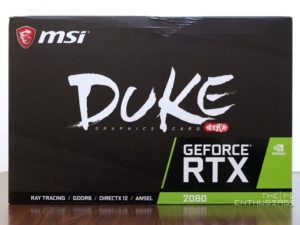
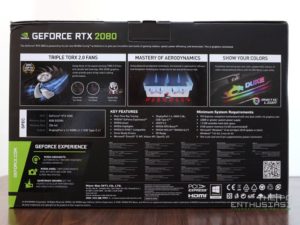

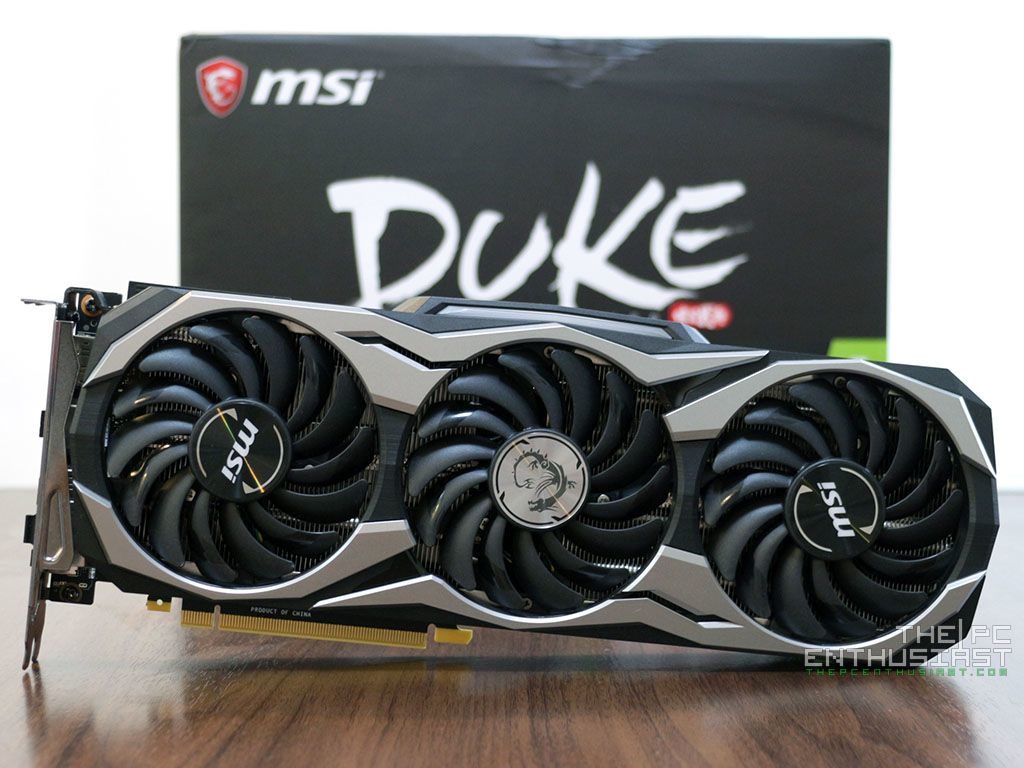
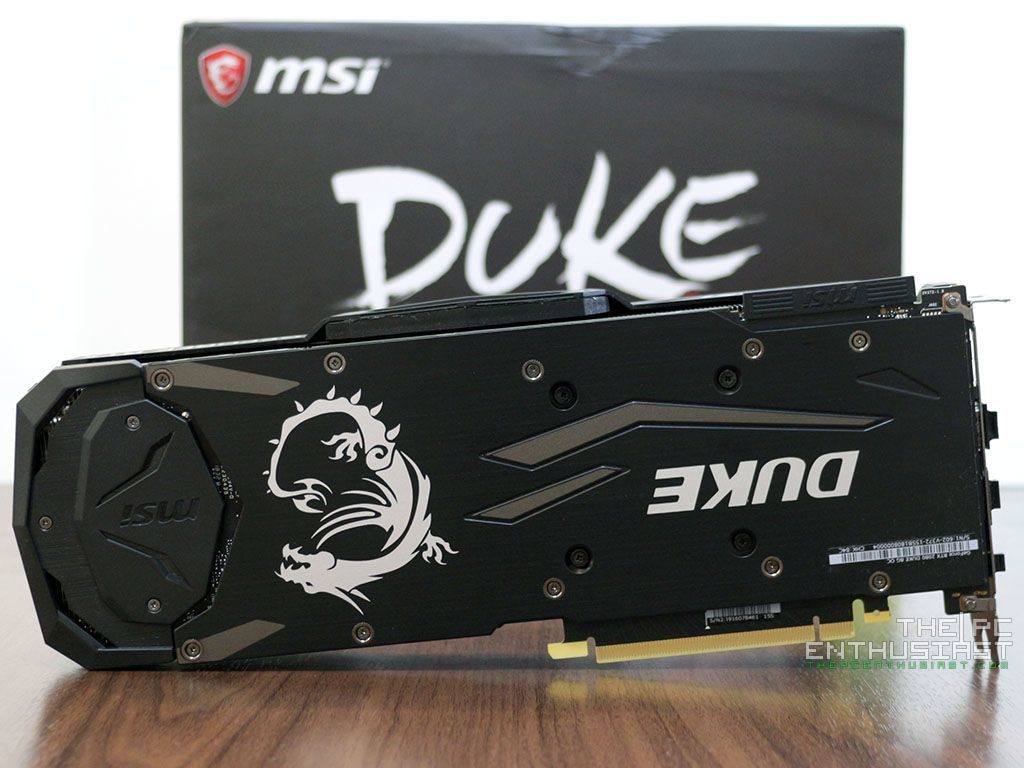
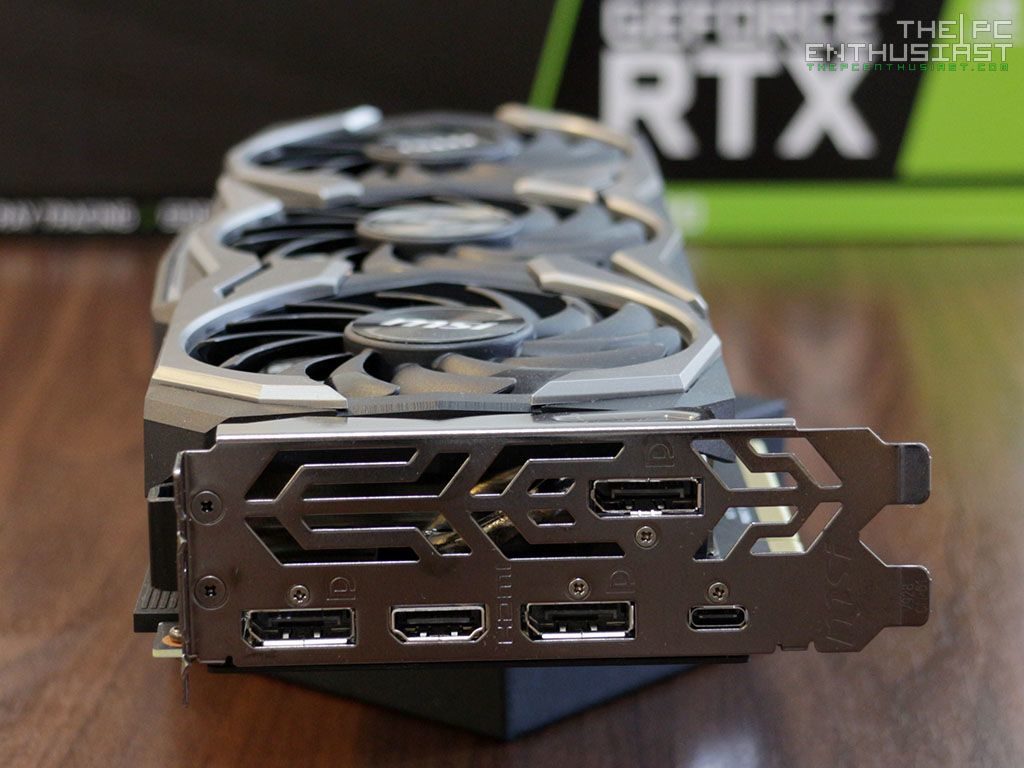
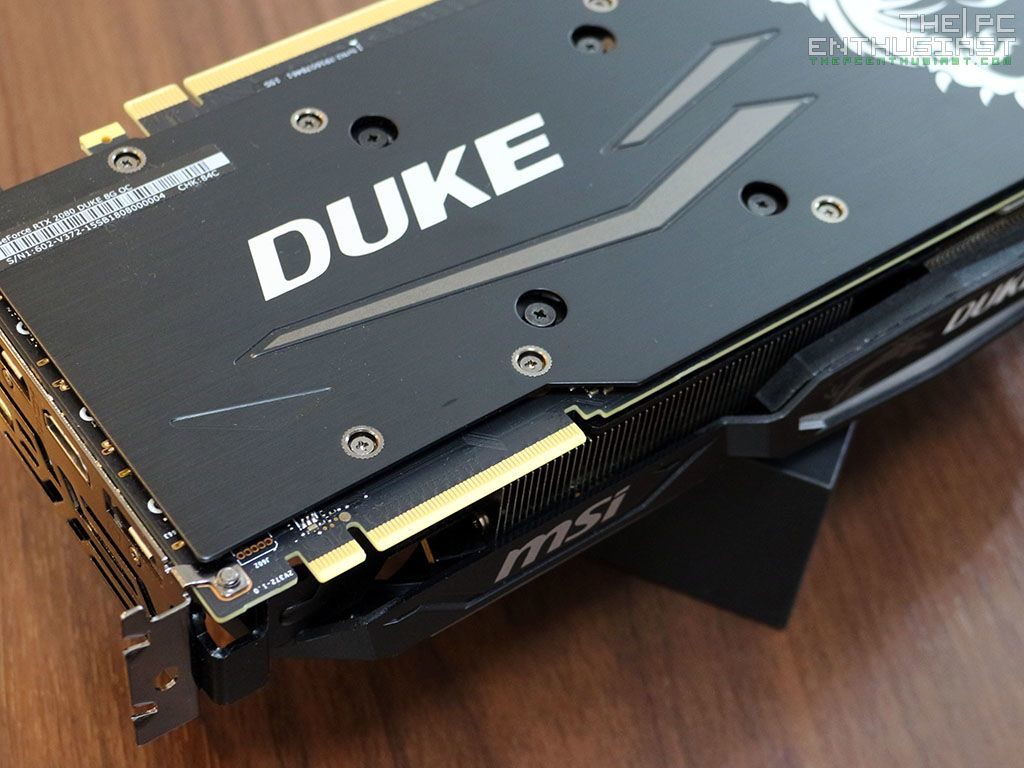
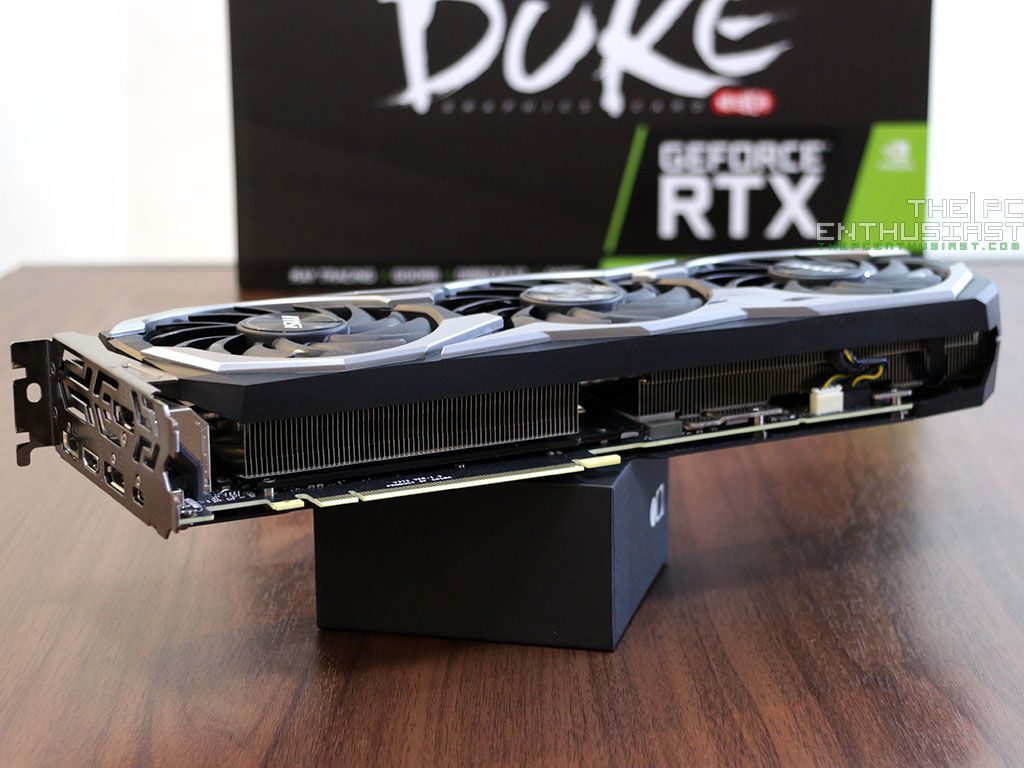
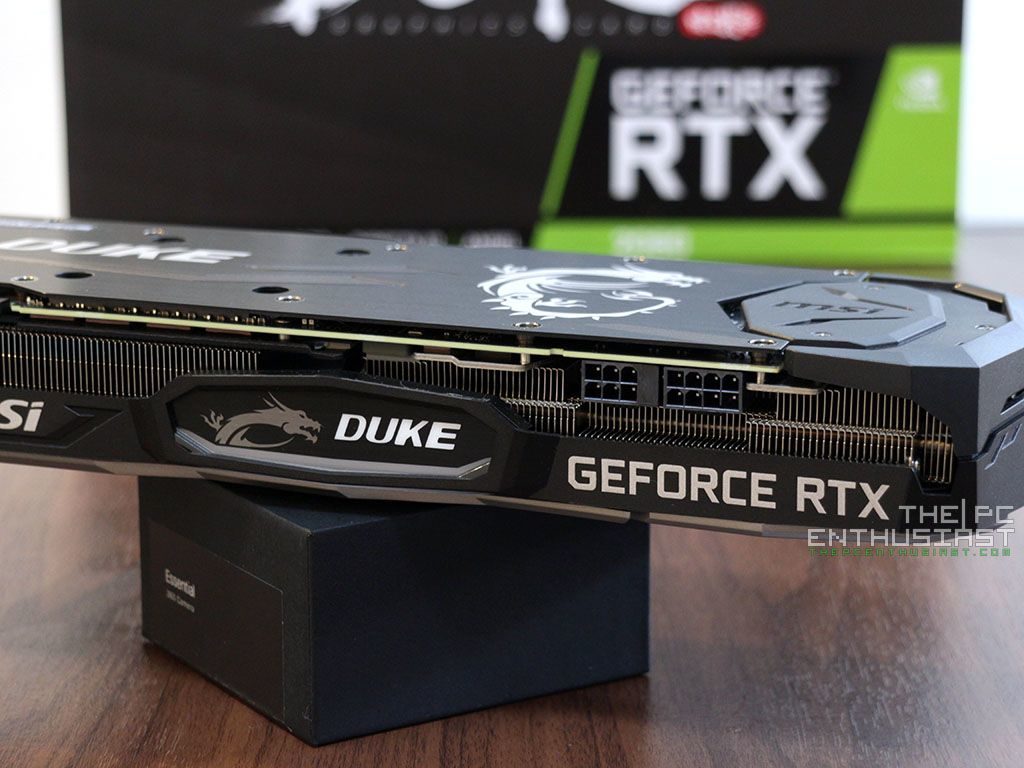
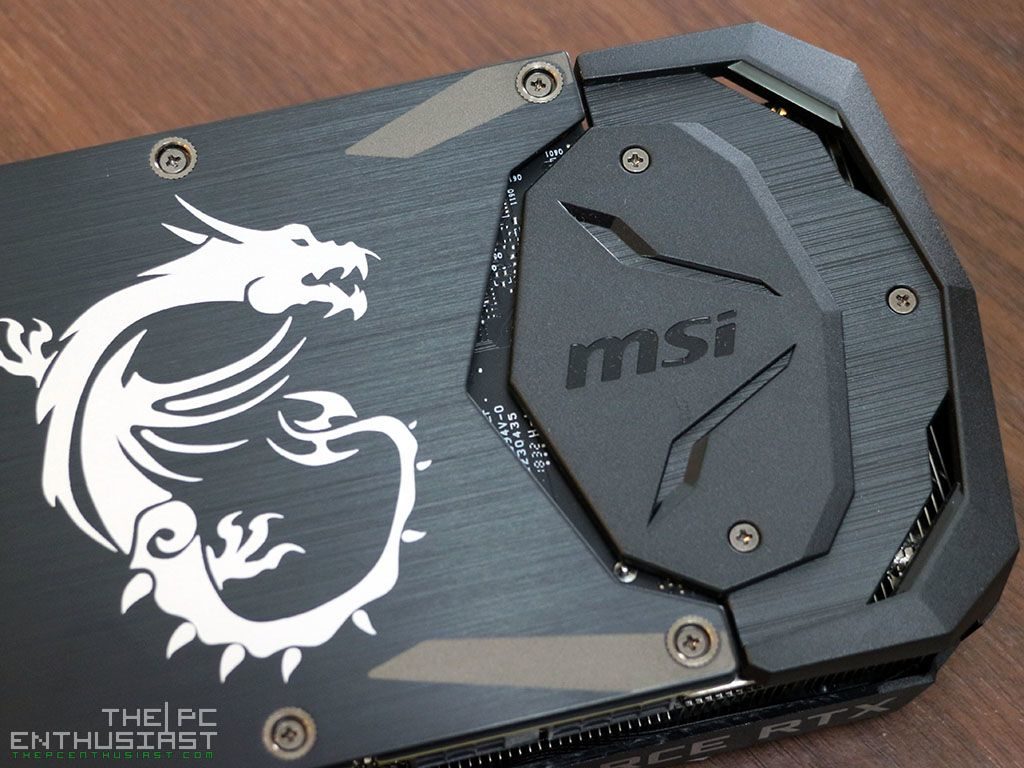
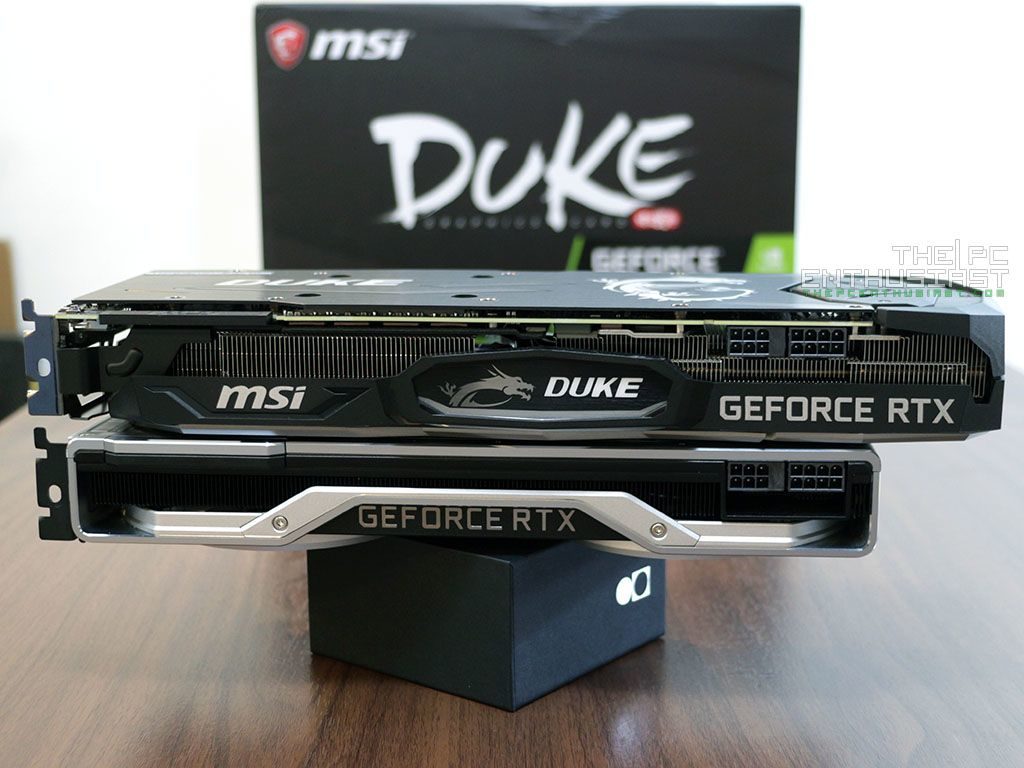
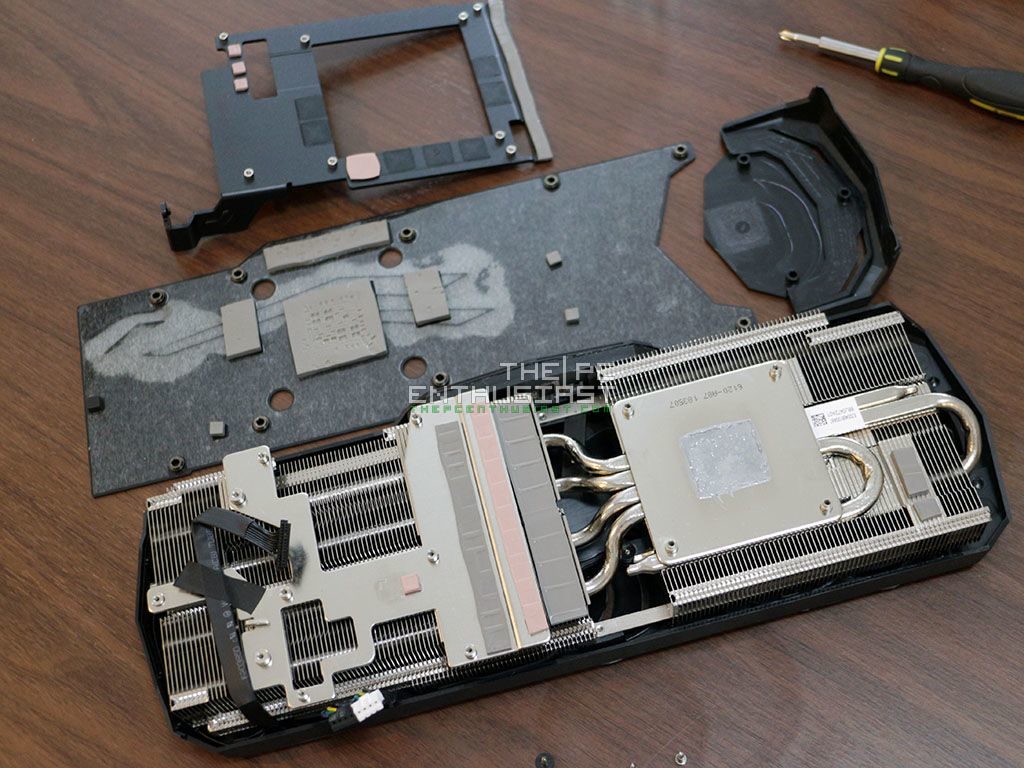
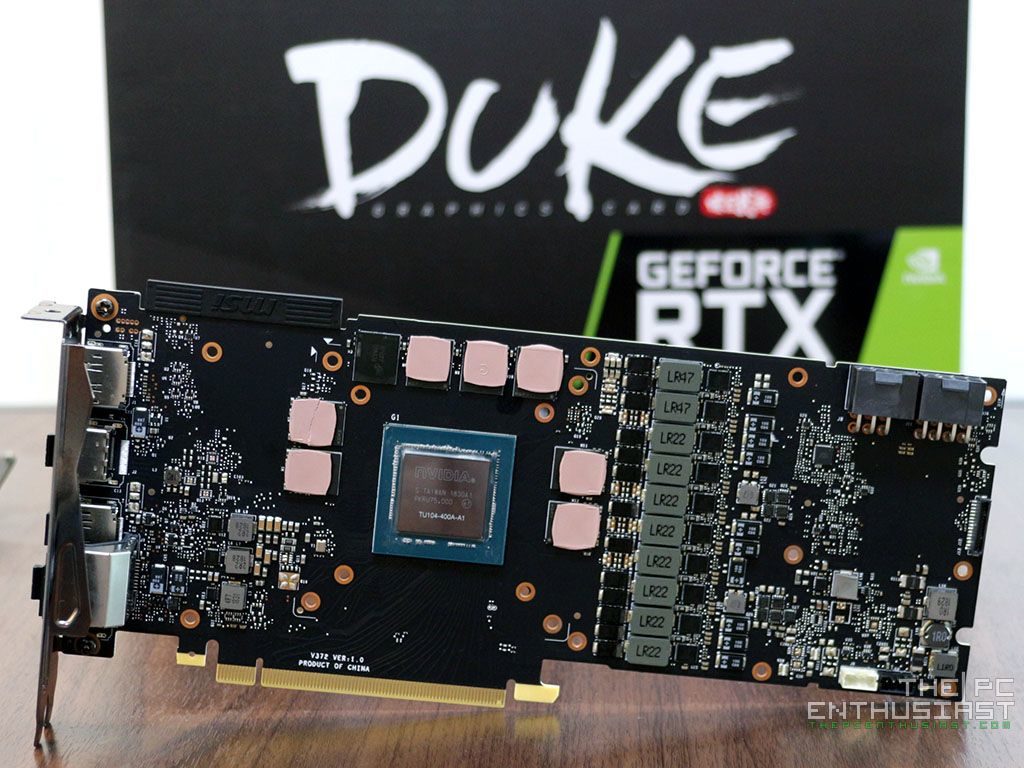
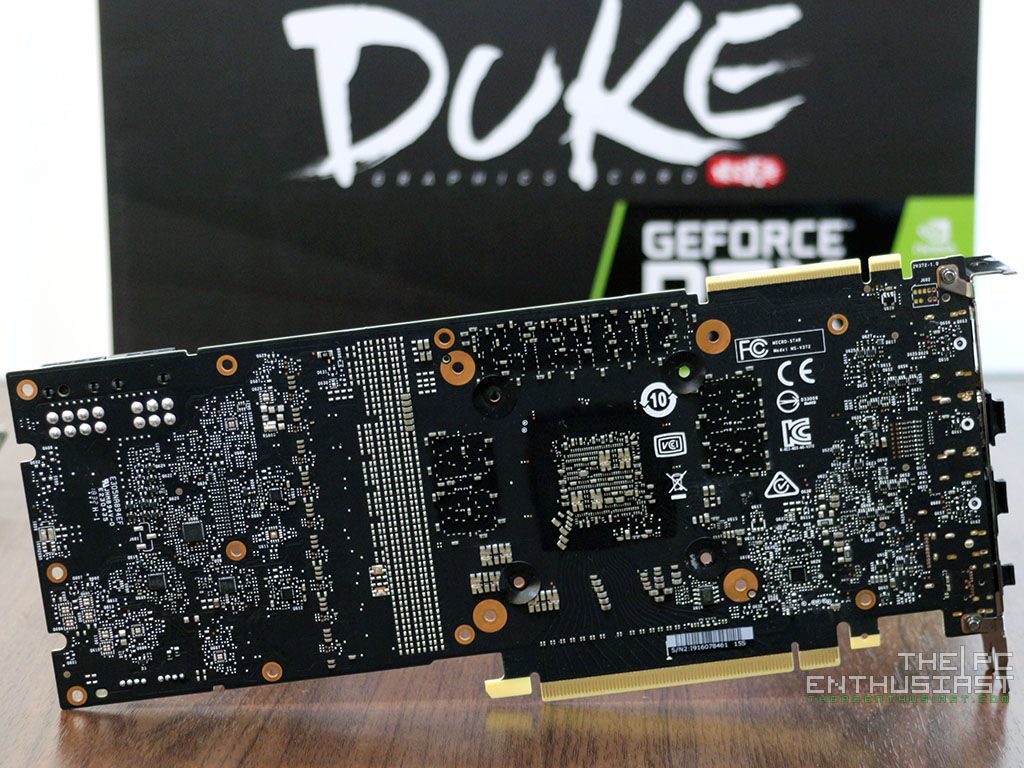
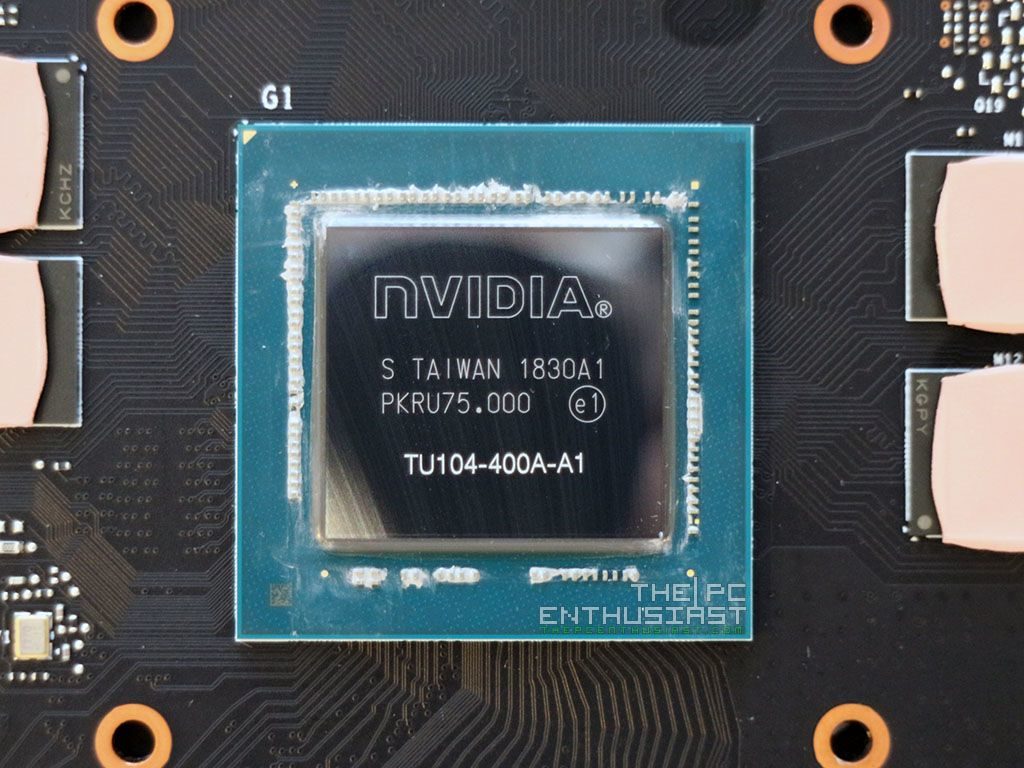
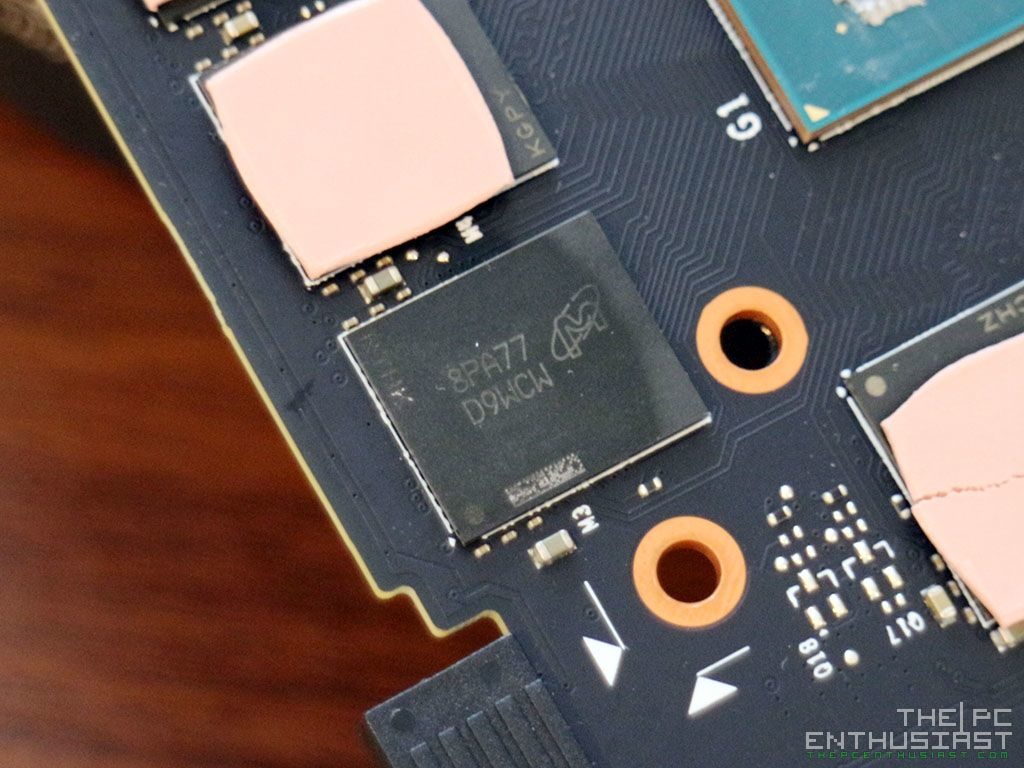
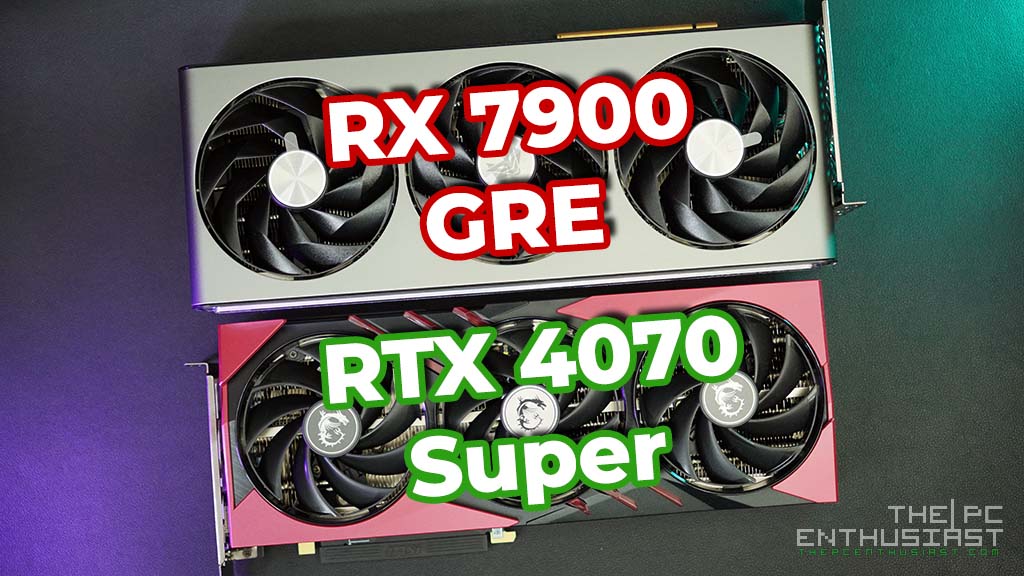
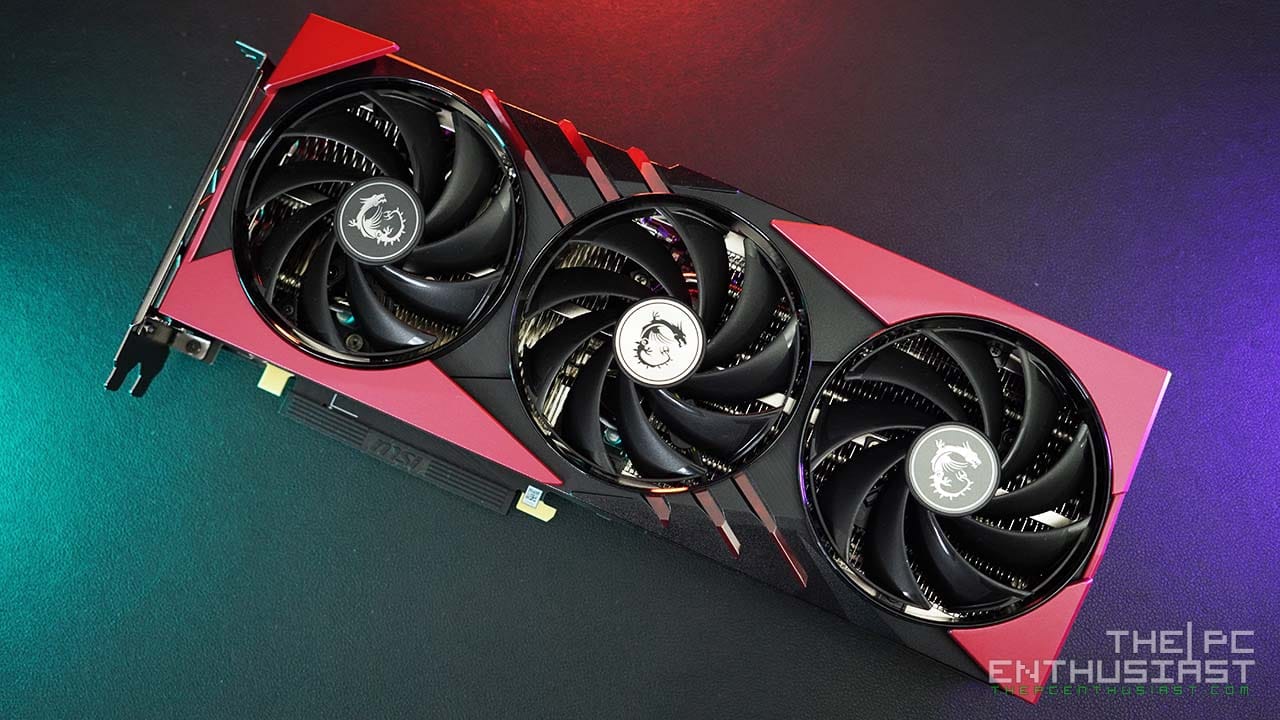
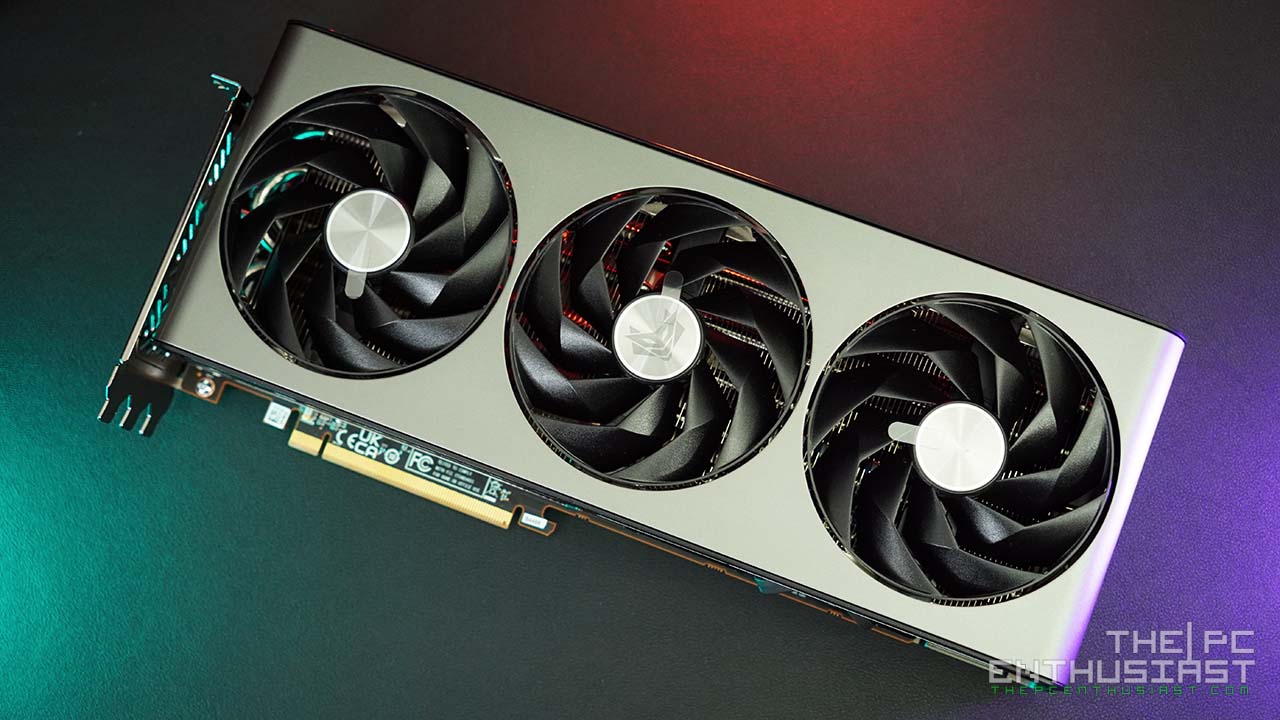
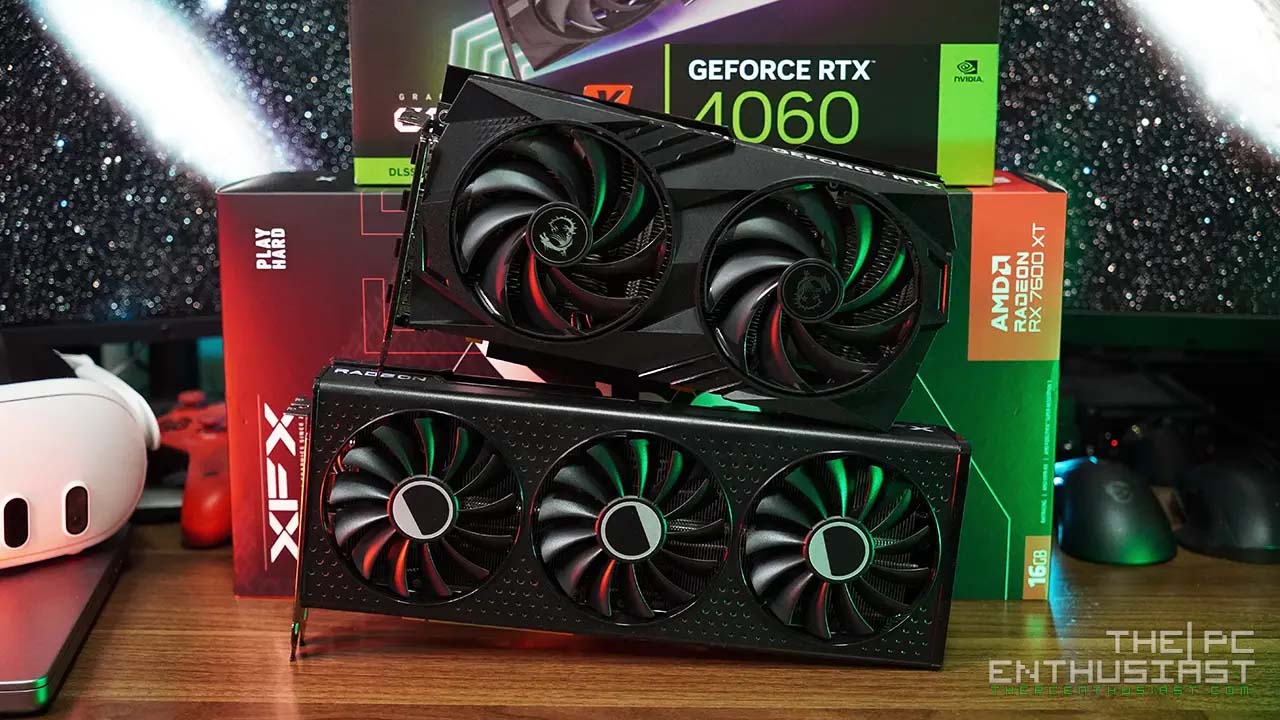
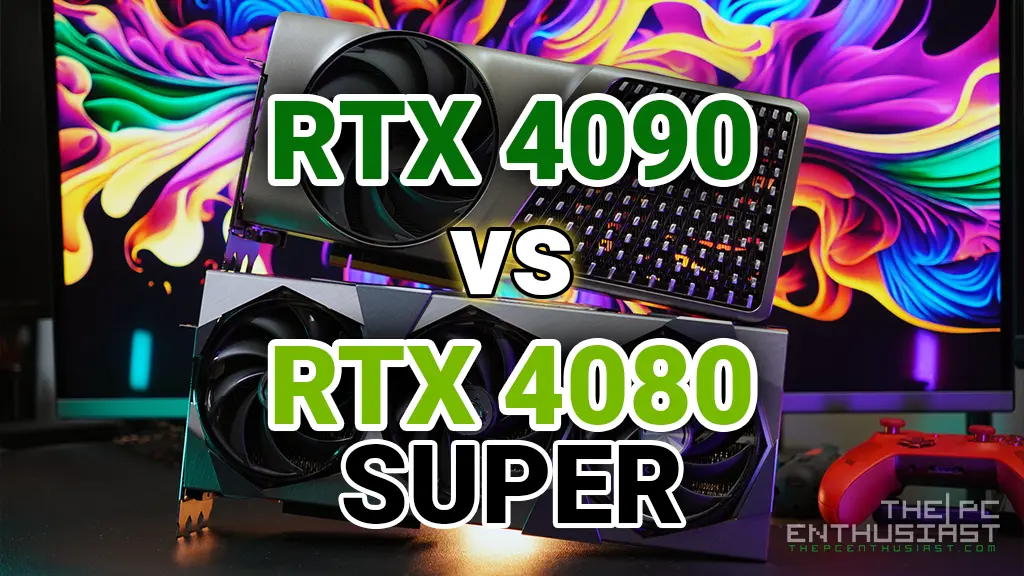
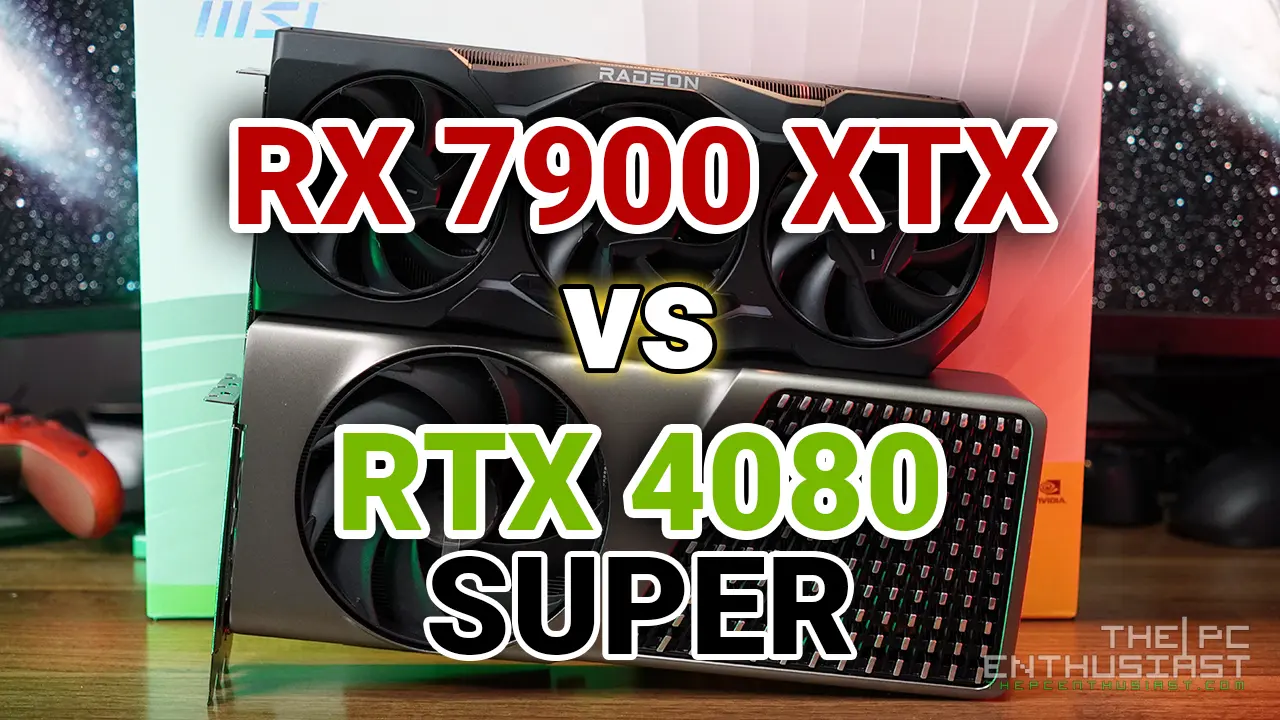

Have you heard any reports of “noise” coming from these cards? And I don’t mean just when they are under load from gaming; I mean noise while idle. There is a somewhat loud, and definitely obnoxious noise from my Duke OC, and I have no idea what would be causing it; I do know that my PC was not noisy to any extent before I got this card. The only time there would be noise would be if I ramp up the case fans’ speed using the adjuster dial on the case. But ever since I installed that Duke, from probably a week or so after I got it, it has been making this noise; I can’t describe it, either.
Are you referring to coil whine noise? Or are the noise coming from the fans themselves? We haven’t encountered this issue with out Duke OC.
I just won the 2080 duke oc, how much do you think i will get for it?
You won a 2080? That’s cool! Not sure what’s the current pricing due to the current (shortage/scalping) situation, but you can check local pricing for reference.